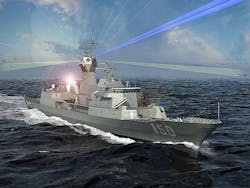Raytheon to help DARPA develop RF and microwave arrays for communications, radar, EW, and SIGINT
Scientists at the U.S. Defense Advanced Research Projects Agency (DARPA) in Arlington, Va., are awarding a $5.6 million to the Raytheon Integrated Defense Systems segment in Tewksbury, Mass., for taking part in the Arrays at Commercial Timescales (ACT) program.
This initiative seeks to move beyond the traditional specialized and time-consuming array design process and focus on new ways of developing electromagnetic arrays.
Today’s RF and microwave systems increasingly use antenna arrays for multiple beam forming and electronic steering, yet these arrays are expensive and time-consuming to develop and upgrade in the field. While the commercial market has set the pace of how electronic systems evolve, military electronics development lags behind, DARPA researchers say.
Related: DARPA seeks to speed RF and microwave array development for radar, comms, and SIGINT
A fielded military system based on decade-old electronics, for example, has a small fraction of the capabilities of a system based on modern components, and the performance gap is widening between RF components and digital electronics.
As a result, a system with static RF or analog features cannot capitalize on advancements of the underlying digital electronics. Raytheon engineers will help DARPA define a path toward shorter design cycles and infield updates.
Raytheon experts will try to push past the traditional barriers that lead to 10-year array development cycles, 20-to-30-year static life cycles, and costly service life extension programs by developing new technology for custom arrays that takes advantage of constantly evolving digital components.
Specifically, Raytheon experts will focus on developing a reconfigurable electromagnetic interface for different polarizations, frequencies, and bandwidths by creating a customizable electromagnetic interface to a common module.
While Raytheon engineers will focus on a reconfigurable electromagnetic interface, other companies to be involved in the DARPA ACT program will concentrate on developing a common hardware module applicable to many different array functions, as well as combining arrays on separate platforms into a larger aperture with precise timing and localization.
The goal of this last technical area will be to create electromagnetic interface arrays that can be fielded at a rate to match that of commercially developed electronic components. Other ACT contractors have yet to be selected.
For more information contact Raytheon Integrated Defense Systems online at www.raytheon.com, or DARPA at www.darpa.mil.
